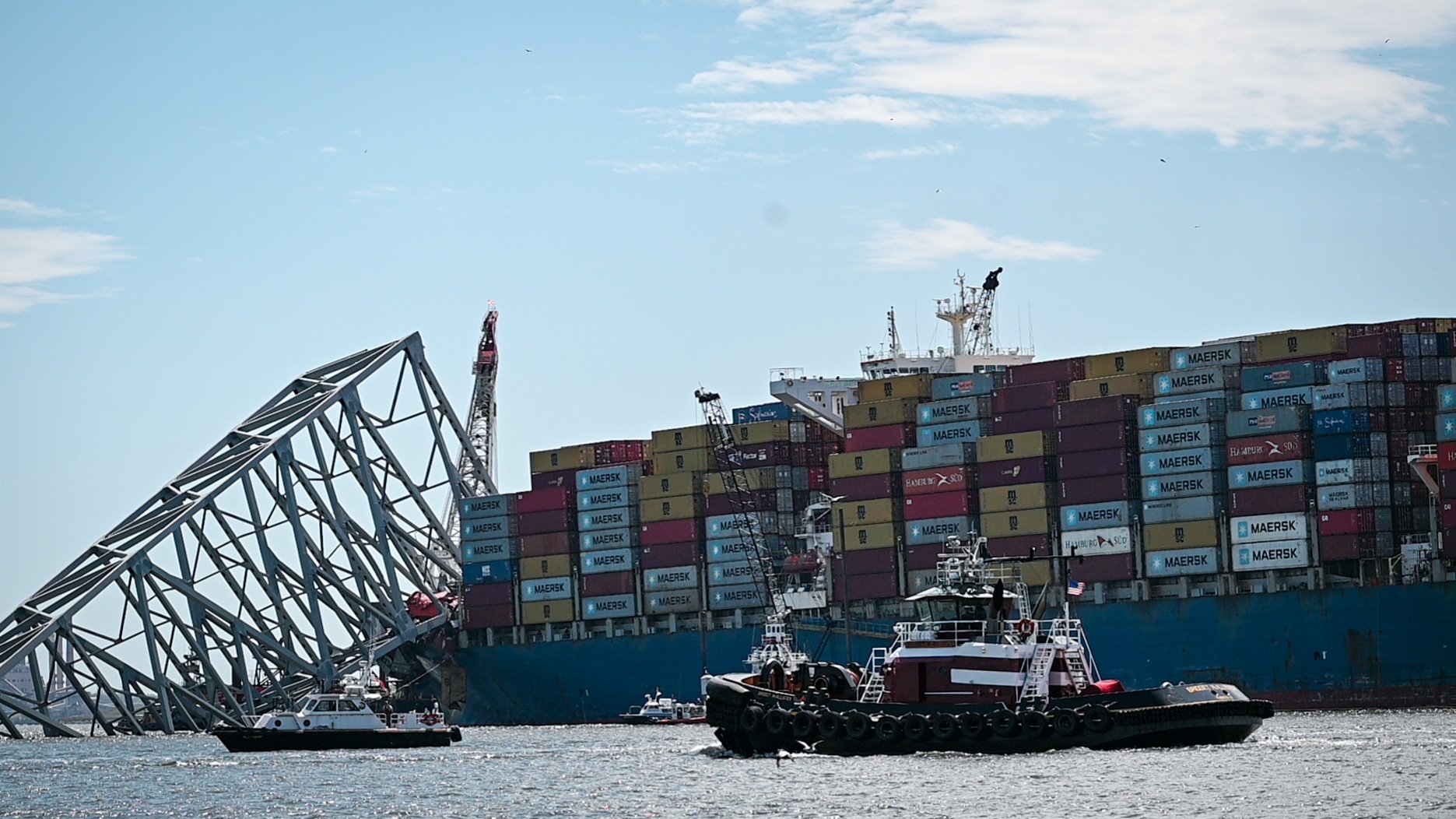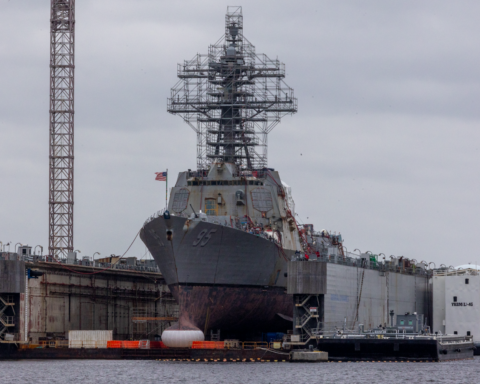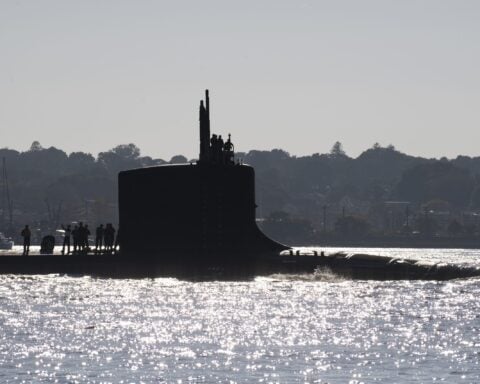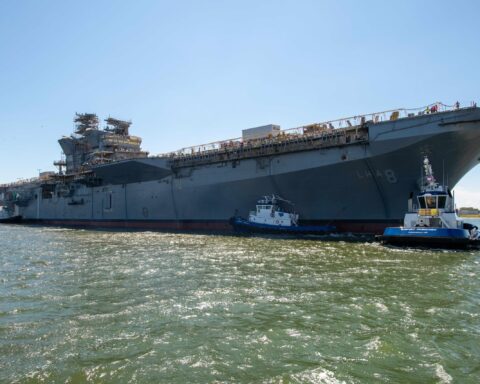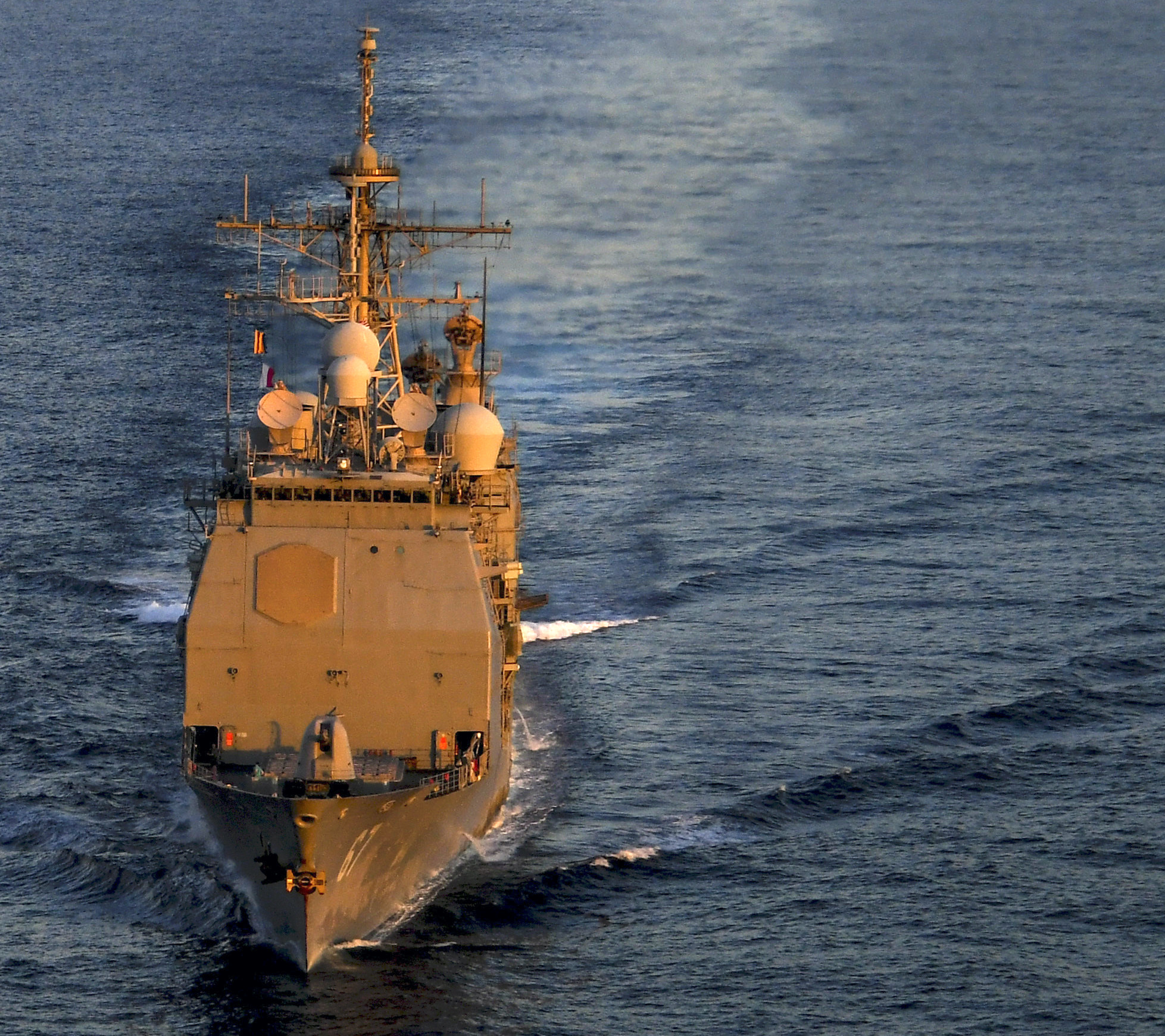
The latest 30-year shipbuilding plan narrows the range of options the Navy will consider for its future force and provides more details on the service’s plan to decommission 19 ships from the fleet.
The Navy’s Long-Range Shipbuilding Plan sketches out two paths to get to a larger fleet – one bounded by flat budgets and a second one that seeks to build the ships the Navy needs to reach its goal of 381 ships the service says it needs to meet its obligation to the Pentagon’s National Defense Strategy.
Decommissionings

Included in the plan details is the complete list of 19 decommissionings the service is requesting in Fiscal Year 2025. As part of the budget rollout last week, the Navy highlighted ten ships it would retire early but did not name the remaining nine set to leave the fleet.
Among the nine the Navy didn’t name as part of the FY 2025 submission is Los Angeles-class attack submarine USS Helena (SSN-725). The nuclear attack boat completed its last deployment in 2017 before entering a maintenance period at Newport News that was completed in 2022. It’s unclear whether the submarine will deploy again ahead of its planned decommissioning. A submarine force spokesperson told USNI News on Tuesday the command intends to “fully employ USS Helena until the boat’s decommissioning date.”
Download the document here.
Other ships not named last week but scheduled for decommissioning include nuclear attack boats USS Pasadena (SSN-752) and USS Topeka (SSN-754), cruisers USS Philippine Sea (CG-58) and USS Normandy (CG-60), and the Avenger-class mine countermeasure ships USS Sentry (MCM-3), USS Devastator (MCM-6), USS Gladiator (MCM-11) and USS Dextrous (MCM-13).
Those nine ships follow the decommissioning list the Navy published last week, which included two more cruisers, the first four expeditionary fast transports, one Whidbey Island-class docking landing ship, one expeditionary transfer dock and two littoral combat ships. Those ships are USS Shiloh (CG-67), USS Lake Erie (CG-70), USNS Spearhead (EPF-1), USNS Choctaw County (EPF-2), USNS Millinocket (EPF-3), USNS Fall River (EPF-4), USS Germantown (LSD-42), USNS John Glenn (ESD-2), USS Jackson (LCS-6) and USS Montgomery (LCS-8). According to the plan, the cruisers, LCSs and two of the Spearhead EPFs will be used as parts donors for other active duty ships.
Missing from the decommissioning list is Nimitz-class aircraft carrier USS Dwight D. Eisenhower (CVN-69). Like last year’s plan, USS Nimitz (CVN-68) is set to leave the fleet next year but Ike is no longer listed. The FY 2024 plan had Eisenhower leaving the fleet in 2027, USNI News reported. Since then the carrier has been extended past FY 2029, according to a report in Stars and Stripes.
Two Profiles

The shipbuilding blueprint includes two funding profiles – one that follows the analysis of the 2023 Battle Force Ship Assessment and Requirement study, requires more funding than the recent budget proposal asks for, and pursues a larger fleet. The Navy is referring to that proposal as “the official PB2025 ‘shipbuilding plan.’” The second profile is a resource-constrained plan that shows what the Navy can build and maintain without funding increases that go beyond inflation.
“The high range represents an average of $2.7B per year in real growth beyond the FYDP in FY2024 constant dollars. The increased procurement level, informed by industrial base capacity and on-time and on-budget performance, achieves 330 manned battle force ships in the mid-2030s, and ultimately achieves 377 manned battle force ships in FY2045,” reads the plan.
Last year, the Navy told Congress in a classified report that it would need 381 crewed battleforce ships to meet its obligation to the National Defense Strategy based on its internal assessment. While the Navy’s aspirational goal is 381 hulls, a total it would hit in 2043 in its best-resourced plan, the service is planning around the more austere plan, USNI News understands. Under a lower-cost plan, the Navy hits a maximum hull total of 348 in FY 2042.
The major difference between the two long-term plans is the number of surface warships and combat logistics force ships.
“The alternative profile adds risk outside the [five-year defense plan] to the large and small surface combatants and combat logistics force industrial bases,” reads the plan.
The lower-end plan would specifically see fewer small surface combatants like frigates and LCSs while maintaining the minimum number of congressionally mandated 31 amphibious warships, 12 nuclear ballistic-missile submarines and the same build rate for attack submarines that will yield 60 hulls by the 2040s.
Submarines
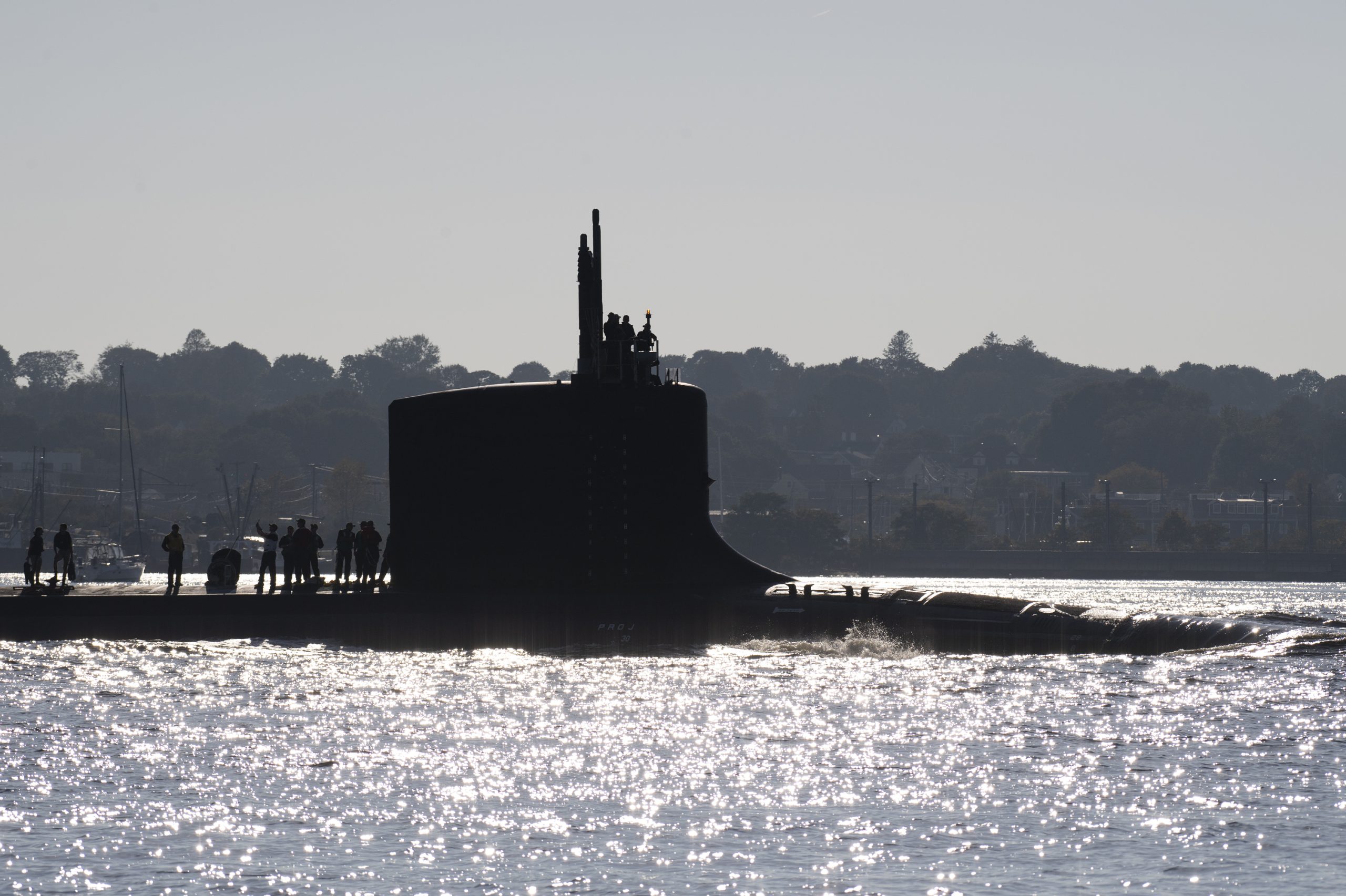
Both the official proposal and the resource-constrained plan would seek to buy two attack boats per year from FY 2026 through FY 2043. Both plans also show the Navy buying one Columbia-class submarine per year from FY 2026 through FY 2035, reflecting the goal of recapitalizing the sea-based leg of the nuclear triad and the need to replace the Ohio-class submarines one for one as they retire.
The plan also breaks down the significant investment in the submarine industrial base that Navy officials argue is required to both build the boats the U.S. needs and pursue the partnership with the United Kingdom and Australia, known as AUKUS, that would see the U.S. sell several Virginia-class boats to the Royal Australian Navy in the 2030s. Between the FY 2023 five-year budget outlook known as the Future Years Defense Plan, both the FY 2024 and FY 2025 FYDPs, the $3.3 billion FY 2024 supplemental funding request and the Shipyard Infrastructure Optimization Plan, the service wants to invest $17.5 billion in the submarine industrial base in then-year dollars.

